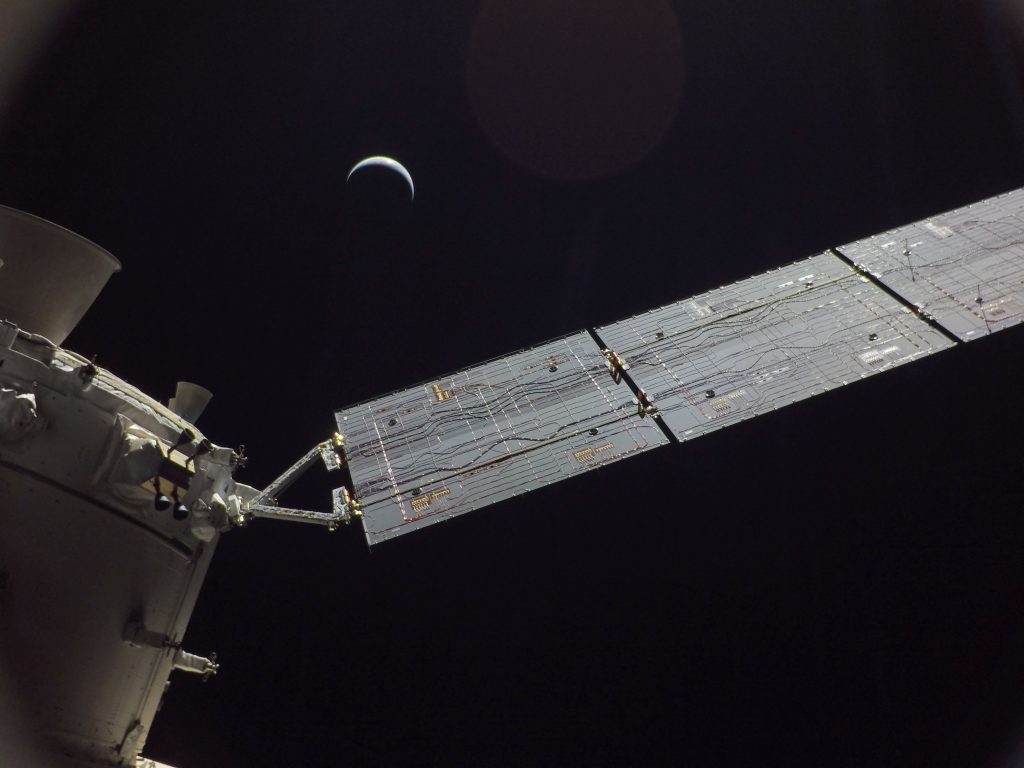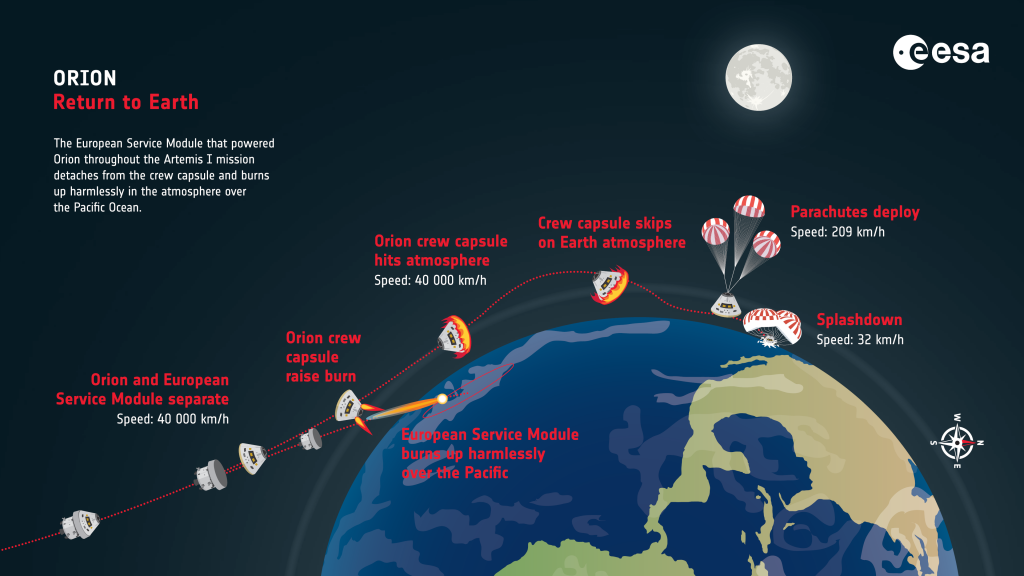Flight day 25, 10 December, was the last full day in space for Orion and its European Service Module. Splashdown off the coast of Baja is set for 18:39 CET (17:39 GMT) on 11 December with the European Service Module separating from the spacecraft 40 minutes before and burning up harmlessly in the atmosphere.
Engineers conducted the last Artemis I flight test objective in space, measuring temperature on solar array wings that increase from engine exhaust gas. Once the European solar array wing was in position for the test, flight controllers fired the reaction control system thrusters using opposing thrusters simultaneously to minimise changing direction and speed but in a variety of firing patterns. Engineers will perform several additional flight test objectives after Orion splashes down in the water and before powering down the spacecraft.
The fifth return trajectory correction burn occurred at 21:32 CET (20:32 GMT). During the burn the auxiliary engines fired for 8 seconds, accelerating the spacecraft by 5.5 km/h (1.6 m/s) to ensure Orion is on course for splashdown. The sixth and final trajectory correction burn will take place about five hours before Orion enters Earth’s atmosphere, the last major operation for the European Service Module.

On Orion’s return to Earth, NASA’s Tracking and Data Relay Satellite (TDRS) will facilitate communications for the final return trajectory correction burn, spacecraft separation, reentry through the Earth’s atmosphere and splashdown. Shortly before the service module separates from the crew module, communication will be switched from NASA’s Deep Space Network to its Near Space Network for the remainder of the mission. Located in geosynchronous orbit about 35 400 km above Earth, TDRS are used to relay data from spacecraft at lower altitudes to ground antennas, including communications for the International Space Station.
During reentry, the intense heat generated as Orion encounters the atmosphere turns the air surrounding the capsule into plasma and briefly disrupts communication with the spacecraft. The same heat from reentry is what will incinerate the European Service Module, by design it is unprotected from these extreme temperatures and will not survive reentry.

Recovery
For the Orion crew capsule the mission continues 40 minutes longer than the European Service Module’s. The primary objective for the Artemis I mission is to safely splash down and recover the capsule. Recovery forces have arrived on location off the coast of Baja where they will stand by to greet the spacecraft after its reentry back into the atmosphere. On the ship, personnel are running through preparations and simulations to ensure the interagency landing and recovery team, led by NASA’s Exploration Ground Systems from Kennedy Space Center in Florida, USA, where the Artremis was launched almost a month ago now. The team consists of personnel and assets from the US Department of Defense, including Navy amphibious specialists and Space Force weather specialists, and engineers and technicians from Kennedy Space Center, Johnson Space Center in Houston, USA, and Lockheed Martin Space Operations.
Teams will recover Orion and attempt to recover hardware jettisoned during landing, including the forward bay cover and three main parachutes. A four-person team of engineers from Johnson will help get the ship as close as possible to Orion for a quick recovery. A secondary objective is to recover as many additional elements as possible for analysis later

Just after 21:00 CET (20:00 GMT) on 10 December Orion was 182 585 km from Earth and 385 330 km from the Moon, cruising at 5430 km/h.
Live coverage of Orion’s reentry and splashdown will begin at 17:00 CET (16:00 GMT). A post-splashdown briefing is scheduled for about 21:30 CET (20:30 GMT).

 Automated Transfer Vehicle page
Automated Transfer Vehicle page ATV blog archive
ATV blog archive
Discussion: no comments